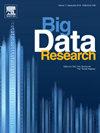可解释的恶意软件检测通过集成图约简和学习技术
IF 4.2
3区 计算机科学
Q2 COMPUTER SCIENCE, ARTIFICIAL INTELLIGENCE
引用次数: 0
摘要
近年来,控制流图和函数调用图由于能够表征程序复杂的结构和功能行为,在恶意软件检测任务中受到了广泛的关注。为了更好地利用这些表征在恶意软件检测中并提高检测性能,将它们与图神经网络(gnn)配对。然而,这些图形表示的规模和复杂性给研究人员带来了重大挑战。同时,GNN模型提供的简单的二值分类对于恶意软件分析来说是不够的。为了解决这些挑战,本文将新的图约简技术和GNN可解释性集成到恶意软件检测框架中,以提高效率和可解释性。通过我们广泛的进化,我们证明了所提出的图约简技术显着降低了输入图的大小和复杂性,同时保持了检测性能。此外,使用gninterpreter提取的重要子图提供了关于模型决策的更好的见解,并帮助安全专家进行进一步的分析。本文章由计算机程序翻译,如有差异,请以英文原文为准。
Explainable malware detection through integrated graph reduction and learning techniques
Recently, Control Flow Graphs and Function Call Graphs have gain attention in malware detection task due to their ability in representation the complex structural and functional behavior of programs. To better utilize these representations in malware detection and improve the detection performance, they have been paired with Graph Neural Networks (GNNs). However, the sheer size and complexity of these graph representation poses a significant challenge for researchers. At the same time, a simple binary classification provided by the GNN models is insufficient for malware analysts. To address these challenges, this paper integrates novel graph reduction techniques and GNN explainability in to a malware detection framework to enhance both efficiency and interpretability. Through our extensive evolution, we demonstrate that the proposed graph reduction technique significantly reduces the size and complexity of the input graphs, while maintaining the detection performance. Furthermore, the extracted important subgraphs using the GNNExplainer, provide better insights about the model's decision and help security experts with their further analysis.
求助全文
通过发布文献求助,成功后即可免费获取论文全文。
去求助
来源期刊

Big Data Research
Computer Science-Computer Science Applications
CiteScore
8.40
自引率
3.00%
发文量
0
期刊介绍:
The journal aims to promote and communicate advances in big data research by providing a fast and high quality forum for researchers, practitioners and policy makers from the very many different communities working on, and with, this topic.
The journal will accept papers on foundational aspects in dealing with big data, as well as papers on specific Platforms and Technologies used to deal with big data. To promote Data Science and interdisciplinary collaboration between fields, and to showcase the benefits of data driven research, papers demonstrating applications of big data in domains as diverse as Geoscience, Social Web, Finance, e-Commerce, Health Care, Environment and Climate, Physics and Astronomy, Chemistry, life sciences and drug discovery, digital libraries and scientific publications, security and government will also be considered. Occasionally the journal may publish whitepapers on policies, standards and best practices.
 求助内容:
求助内容: 应助结果提醒方式:
应助结果提醒方式:


